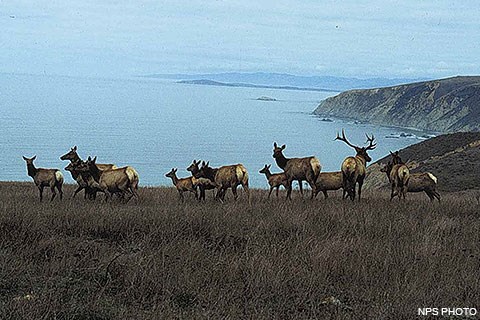
The tule elk herds had virtually disappeared by 1860, 13 years before the state awarded them complete protection. In the spring of 1978, two bulls and eight cows were brought in from the San Luis Island Wildlife Refuge near Los Banos. The elk were contained within a temporary, three acre enclosure to allow for adjustment to their new surroundings. That summer, six of the cows bore calves. In the fall, 17 elk were released from the enclosure on Tomales Point to the 2,600 acres (1,052 hectares) of open grassland and coastal scrub. By the summer of 1988, the population was at 93 animals. The population census taken in 2000 counted over 400 elk, after peaking at around 550 in 1998. Since 2000, the population on Tomales Point has fluctuated, but remains one of the largest populations of tule elk in California. In 2019, the National Park Service increased the size of the reserve to 2,900 acres (1,174 hectares). The tule elk can be found in several locations within the park, such as along Drakes Beach Road and in the Phillip Burton Wilderness west of Limantour Road, but the best chance of seeing them is at Tomales Point. They graze freely and are often seen near the road as you drive along the road. Tule Elk Rut Season
August through October is an exciting time of year on Tomales Point. Visitors will likely hear bull elk bugling and see them attempting to round up harems of females. The lucky visitor may even get to see a couple of bull elk sparring. Elk Watching TipsTo help you enjoy your experience, please follow these elk watching tips:
Learn MoreDiscover more about the tule elk by visiting our Tule Elk web page. | |
Last updated: June 28, 2024
